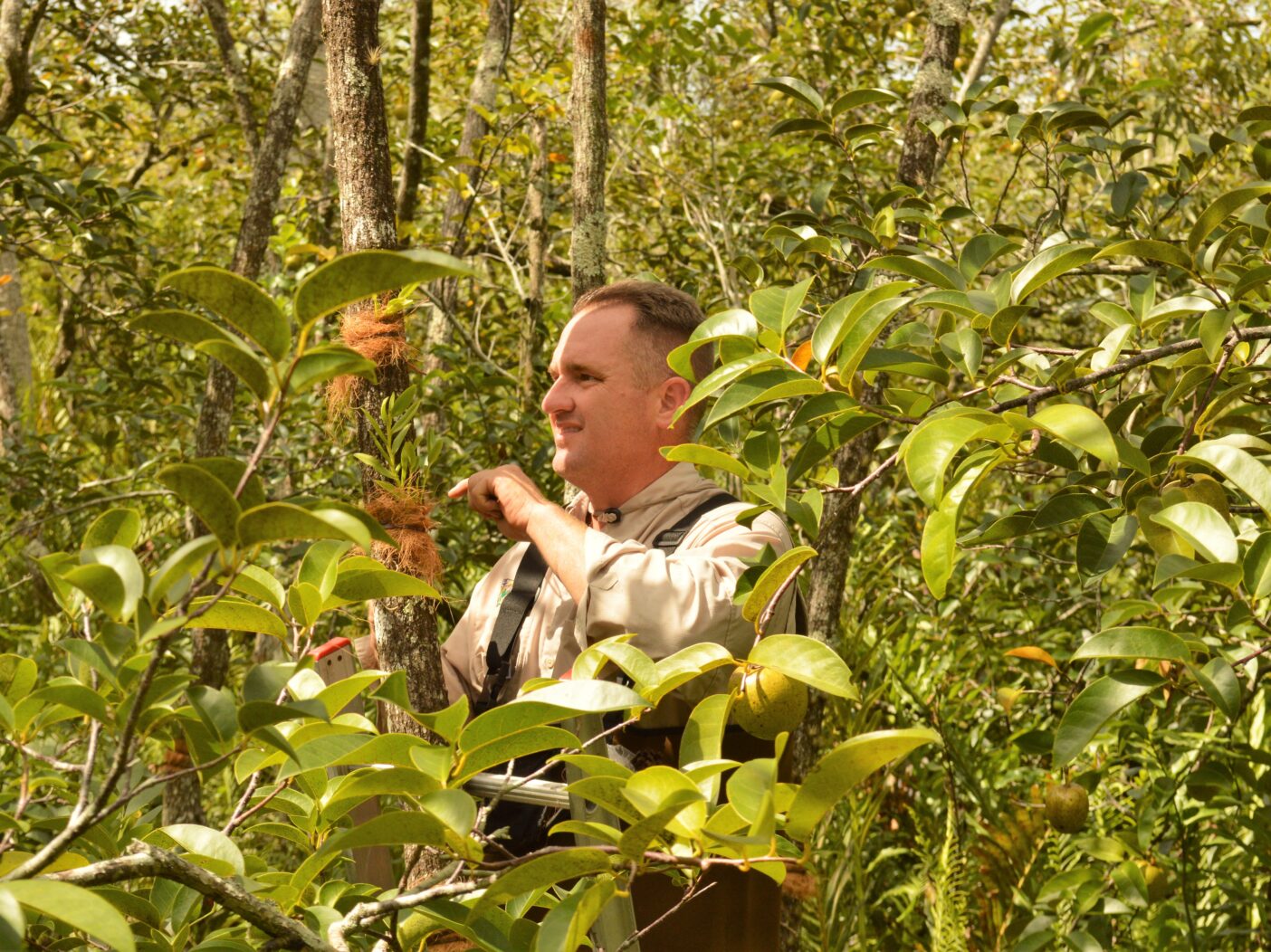
Nick Ewy pulls on a pair of chest-high waders and lowers himself into the swamp beside the Sönne Family Ghost Orchid Boardwalk. Even without the gear, it’s mercilessly hot, but you couldn’t find a happier Director of Collections.
In his hands are native orchids that he’s spent the last four years growing from seed. On this sultry morning, he’s placing them in their habitat, the final step in the plants’ journey from laboratory vile to viable epiphyte. (Click here to see our Summer 2020 magazine, and an article about the earlier stages of Nick’s project.)
“It’s been one of those dream things that I’ve always wanted to do,” Nick says. He has enjoyed some collaboration with other researchers and interns, but mostly he’s self-taught in the intricacies of native orchid cultivation — a professional feat for him, but also one that can benefit others who are eager for more information about propagating the plants from seed. Once he places the orchids, Nick will monitor them to see how they fare in their new homes. Although these natives favor the kinds of habitat found along the boardwalk, many of the trees in that part of the Garden are relatively young, and Nick will watch to see if the fledgling plants tolerate the sun exposure.
“It’s a little bit of a gamble putting them out here,” Nick says of the Prosthechea cochleata var. triandra, one of the varieties he’s working with. He’ll place those at lower levels, putting more hardy Epidendrum rigidum closer to the canopy. These species and two others, Epidendrum noctorum and Encyclia tampensis (more commonly known as butterfly orchid), come from seed collected at the Garden or from other research collections comprised of Southwest Florida seeds. Even the pop ash that orchids favor reflect our region; Nick collected the seed from his nearby home and planted the trees here.

Nick’s work will allow visitors to see Florida orchids up close without having to venture into less-accessible preserves where the plants are known to flourish. It also provides a window into what Florida might have looked like predevelopment, with densely packed trees dripping with epiphytes including orchids, bromeliads, and tillandsia. (Of the latter, incidentally, we have some interesting species, such as the rare Tillandsia pruinosa or “fuzzy wuzzy,” which Nick found on a dying tree on the southern edge of our property and moved to the boardwalk.) In most restoration projects, the emphasis is on replacing trees — not reintroducing epiphytes — so our boardwalk may serve as a good demonstration site showcasing this forest middle layer.
The orchid boardwalk is temporarily closed in order to prevent the spread of COVID-19, but be certain to visit once it reopens. In the meantime, there are plenty of orchids to see in the LaGrippe Orchid Garden, along our one-way route through the Garden, and at the Chabraja Visitor Center, where Nick puts them on display.
 About the Author
About the Author
Jennifer Reed is the Editorial Director of Naples Botanical Garden and a longtime Southwest Florida journalist.

